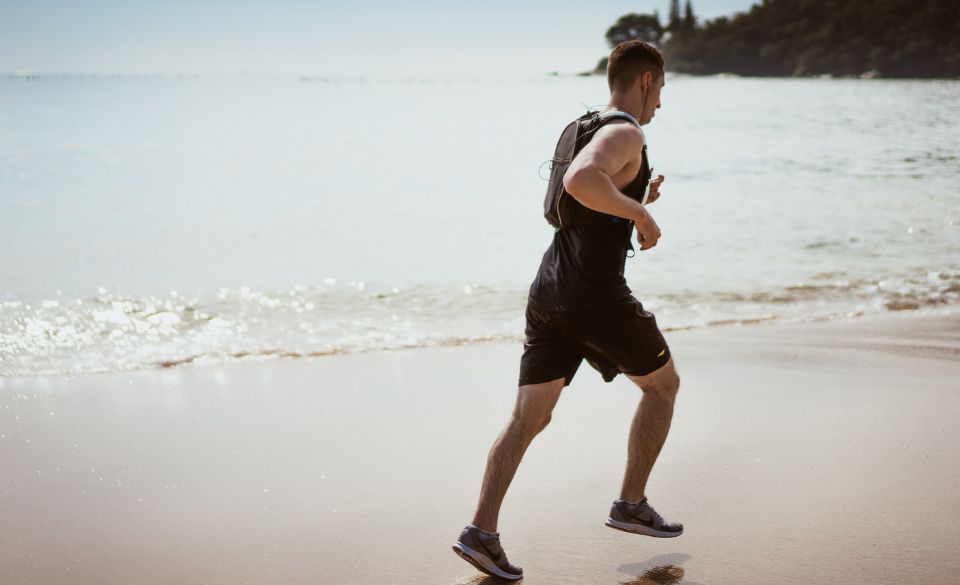
How to Begin Running at 40 and Beyond: A Comprehensive Guide
Page Contents
Running stands out as a sport that embraces everyone, regardless of age, stature, or background. Whether you’re young or in your forties, affluent or frugal, a bit overweight or slender, the opportunity to become a runner is open to virtually everyone. This inclusivity extends to those who have never run purposefully, except perhaps to catch a bus or chase after a child or a beloved pet.
However, a common concern prevails among many: the apprehension of starting to run at the age of 40 or beyond. The fear that it might be too late, that fitness levels aren’t adequate, or that strength is lacking can deter potential runners. The truth is, regardless of whether you’re 40, 50, 75, or even in your 80s or 90s, it’s never too late to embark on a running journey.
This guide aims to dispel uncertainties and provide a complete roadmap for starting running at 40 and beyond. The initial steps may feel challenging, but rest assured, the rewards will be compelling.
Am I Too Old To Start Running?
Human insecurities often cast doubt on our capabilities, and the fear of becoming a runner is no exception. Many ponder if they’re too old to start running, especially as they hit their forties. The good news is that such concerns can be silenced; numerous runners commence their journey in their later decades. Research supports the idea that consistent training can mitigate the anticipated age-related decline in aerobic performance.
While peak performance might occur in the late 20s or early 30s, running transcends mere speed. The health and fitness benefits of running can be enjoyed throughout life, with master runners (those aged 40 and older) achieving remarkable feats, surpassing competitors a decade their junior. In essence, age should not hinder anyone from starting running at 40 or beyond.
Tips for How to Start Running at 40 (Or Beyond)
Initiating running at 40 mirrors the process at any age—it starts with that first step. Yet, there are unique challenges for older beginners due to the body’s natural aging process and reduced tolerance for high-impact exercises. Here are key tips:
1. Get a Check-Up: Before starting, consult with your healthcare provider for medical clearance, even if you’re seemingly healthy. Running is demanding on the cardiovascular system, and a check-up ensures a safe beginning.
2. Find a Coach: A running coach can tailor a plan to your needs, aiding in proper form development. This guidance is particularly beneficial when starting, preventing the need for corrections later.
3. Follow a Training Plan: Utilize free or premium training plans available online to progress gradually, build fitness, and prepare for races. These plans provide structure and guidance.
4. Join a Running Club: Engage socially by joining a local or online running club. The camaraderie offers advice, support, and the chance to find a running buddy.
5. Connect Online: Explore online communities for motivation and advice. Social media groups provide platforms for sharing experiences and learning from others.
6. Mix It Up: Vary your runs in terms of routes, terrains, and workout structures. This not only prevents injuries but also keeps the experience enjoyable and diverse.
7. Practice Proper Form: Focus on good running form to enhance efficiency and reduce injury risks. Drills and strides can help, and consider recording yourself for form analysis.
8. Don’t Be Afraid of Speedwork: While building an aerobic base is crucial, incorporating speed work improves fitness, efficiency, and metabolic flexibility, benefiting runners of all ages.
9. Be Mindful of Mileage: With aging, recovery takes longer, so consider running less volume to avoid overtraining and injuries.
10. Progress Slowly: Follow the 10% rule, limiting weekly increases to prevent injuries and excessive soreness. The goal is a gradual progression for sustainable running.
11. Don’t Play the Comparison Game: Accept that performance might differ from younger runners. Set age-appropriate goals, focusing on personal achievements.
12. Prioritize Strength Training: Incorporate strength training at least 2-3 times per week to counteract muscle loss associated with aging.
13. Supplement with Cross-Training: Include low-impact activities like swimming or cycling to reduce stress on bones and joints while maintaining cardiovascular fitness.
14. Work on Mobility, Stability, and Balance: Exercises targeting mobility, stability, and balance help prevent injuries and promote overall flexibility.
15. Add Flexibility Work: Combat tightening tissues associated with aging through dynamic stretches and post-workout flexibility work.
16. Recover Like a Pro: Prioritize recovery with stretching, foam rolling, adequate nutrition, and sufficient rest. Professional runner practices can benefit runners of all ages.
17. Set Realistic Expectations: Acknowledge that cardiovascular capacity decreases with age. Set realistic goals, fostering confidence and motivation.
18. Adjust Your Goals: Choose reasonable, meaningful goals to provide direction without overwhelming yourself. Goals should evolve as you age.
19. Take Rest Days: Planned rest days are essential for muscle repair. Listen to your body, and rest when needed, preventing overuse injuries.
20. Fuel Your Body with High-Quality Nutrition: Opt for whole, natural foods to support running performance. Balance macronutrients and consider timing around workouts.
21. Don’t Skimp on Sleep: Aim for 7-9 hours of sleep per night to facilitate recovery, especially crucial for runners.
22. See Yourself as a Runner: Embrace your identity as a runner, regardless of age. Wear the label proudly, invest in quality gear, and celebrate the positive impact on your body and mind.
Conclusion: Embrace the Ageless Journey of Running
Running, a sport known for its inclusivity, defies the constraints of age, wealth, and physique. It welcomes individuals into its fold, offering the prospect of becoming a runner to anyone, from the youth to those in their forties, from the affluent to the frugal, and from the slightly overweight to the slender. This universal inclusivity extends its arms even to those who have never embarked on a deliberate run, except, perhaps, in pursuit of a bus or while chasing a child or a cherished pet.
Yet, a prevalent concern lingers, particularly among those contemplating running beyond the age of 40. The fear of it being too late, of inadequate fitness levels, or of lacking the requisite strength can act as a deterrent. The truth is, irrespective of whether one is in their 40s, 50s, 75s, or beyond, it is never too late to embark on the transformative journey of running.
This comprehensive guide seeks to dispel uncertainties and serve as a roadmap for those contemplating or beginning running at 40 and beyond. While the initial steps may appear daunting, the ensuing rewards promise to be both empowering and fulfilling.
Am I Too Old To Start Running?
The self-doubt that often accompanies human insecurities can cast shadows on our ability to become runners, especially as we approach our forties. The good news is that such concerns can be silenced; numerous runners commence their journey in their later decades. Research underscores the idea that consistent training can mitigate the anticipated age-related decline in aerobic performance.
While peak performance may manifest in the late 20s or early 30s, running transcends mere speed. The multitude of health and fitness benefits can be savored across a lifetime, with master runners, aged 40 and beyond, achieving feats that outshine competitors a decade their junior. Essentially, age should not serve as a barrier for anyone contemplating running at 40 or beyond.
Tips for How to Start Running at 40 (Or Beyond)
Initiating running at 40 mirrors the process at any age—it starts with that first step. However, unique challenges await older beginners due to the body’s natural aging process and reduced tolerance for high-impact exercises. The guide provides invaluable tips, ranging from health check-ups and finding a coach to joining running clubs, fostering a sense of community, and embracing online connections.
The overarching theme is one of gradual progression, acknowledging the body’s needs, setting realistic expectations, and celebrating achievements, irrespective of age. Whether practicing proper form, engaging in strength training, or incorporating flexibility work, the guide emphasizes the holistic well-being that accompanies the runner’s journey.
In conclusion, starting to run at 40 and beyond is not just an endeavor; it is an invitation to a vibrant, healthier, and more fulfilling life. As runners, we embark on a timeless journey—one where age is but a number, and each stride brings us closer to a better version of ourselves. So, lace up those running shoes, embrace the identity of a runner, and revel in the positive impact on both body and mind. The road awaits, and it’s never too late to begin the ageless journey of running.


